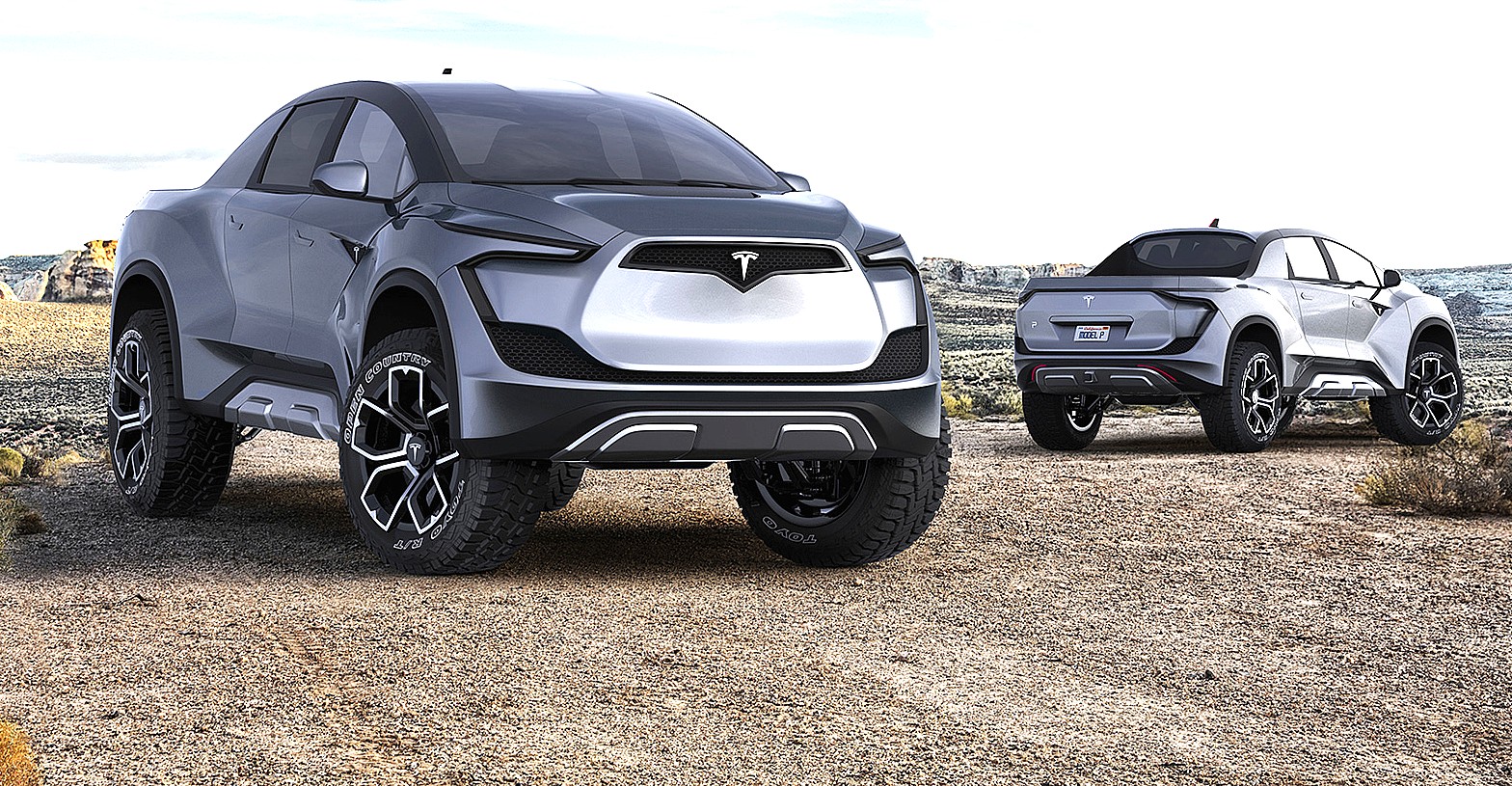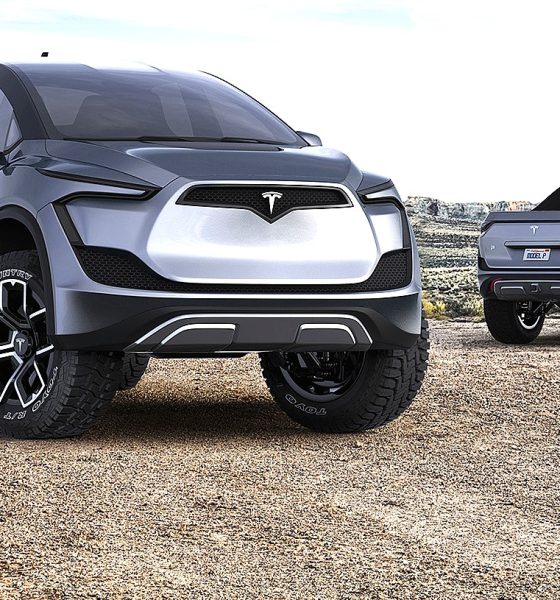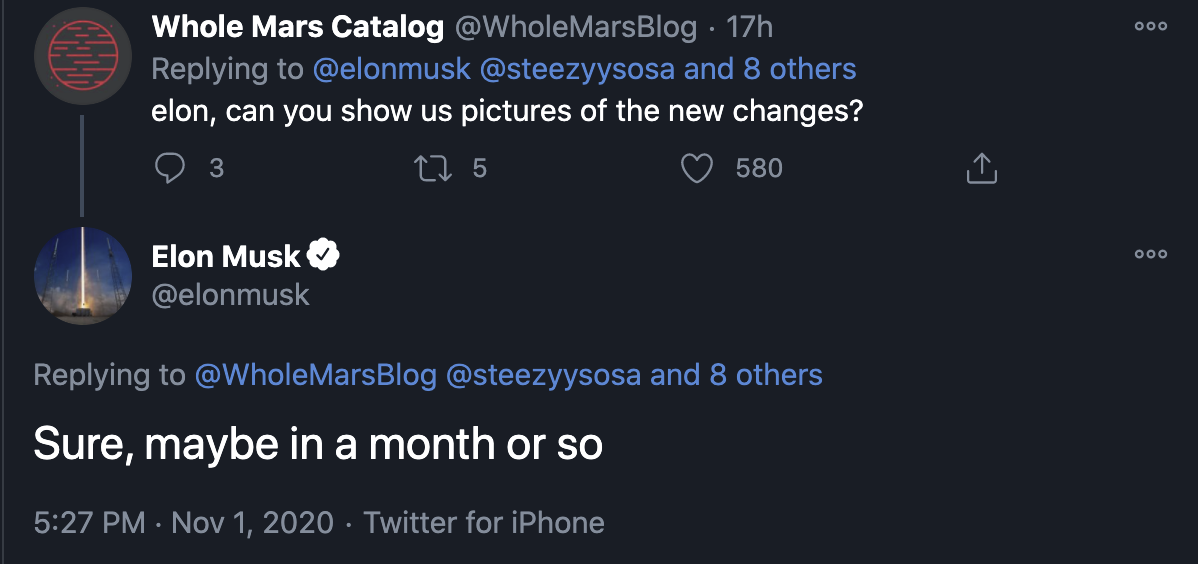

News
Tesla is changing the Cybertruck and will unveil it ‘in a month or so’
Tesla CEO Elon Musk mentioned recently that the Cybertruck would be undergoing “small improvements” to improve the all-electric pickup’s design. Unknowingly, the Tesla community wondered what could possibly be revised for the company’s soon-to-be-produced truck, but as of now, the revisions are being kept under wraps.
That is for about a month or so, in Elon Musk’s words, who stated on November 1st that Tesla would release some images of the Cybertruck’s newly-revised design to the public. Based on Musk’s past statements, who was responsible for unveiling the Cybertruck to the world a year ago this month, some indicators prove the new design could be better than the initial one.

Size Revisions
It is no secret that the Cybertruck’s design is massive. After rolling out onto the stage at the event in Hawthorne, California, the truck’s size was immediately noticed by anyone who was in attendance or was viewing the unveil online. However, big trucks are no stranger to many automotive markets, especially the one in the United States. Americans love their trucks, but they have to be able to fit in parking spaces, residential garages, and on narrow streets.
After an augmented reality app showed that the Cybertruck would be a tight fit with the normally-sized U.S. home’s garage, Musk told Teslarati that the width of the Cybertruck could likely be reduced by an inch and length by six inches. The revisions would also be advantageous for owners who live in other regions, especially Europe and Asia, where highly-populated areas are filled with narrow and tight roadways.
We can prob reduce width by an inch & maybe reduce length by 6+ inches without losing on utility or esthetics. Min height is below 75 inches when air suspension set to low. Will post exact number soon.
— Elon Musk (@elonmusk) December 7, 2019
Musk’s suggestion on revising the vehicle’s dimensions took place less than a month after the Cybertruck’s unveiling in November 2019. The all-electric pickup dimensions could be set for a reduction to make travel and storage an easier project for an owner, all while not sacrificing cabin room or cargo capacity.
Revisions for improved cargo capabilities
Musk has hinted toward the addition of several redesigns of the Cybertruck that would simply increase the ability to haul large items. One of these is a midgate, which would have the rear window of the Cybertruck roll down to open the cabin and extend it through the truck’s bed. This would be advantageous for construction workers who are hauling long pieces of wood, pipe, or other materials. However, it would also be great for the weekly grocery haul, which can be sizeable with a large family. With plenty of uses, it wouldn’t be a surprise to see Musk and Tesla add or revise the rear window’s capabilities just to increase cargo. After all, the CEO said the idea was “worth considering.”
Unique security features
Perhaps Tesla’s Sentry Mode is one of the greatest automotive security features of all-time. However, a thirst for constantly improving infrastructure is always attractive to Tesla, and Musk jokingly stated that a “zapper” would come standard with the Cybertruck. Interestingly, this wasn’t a far-fetched idea because tasers’ use is legal in 49 of 50 U.S. states. It would only improve the security features, but it seems unlikely that the Cybertruck will actually shoot a shock through an intruder’s body.
Tesla’s Elon Musk jokes about Cybertruck taser defense system, but it’s not that far-fetched
Whatever the additions are, Musk knows that the revisions will make the Cybertruck better. During the recent Q3 2020 Earnings Call, Musk talked about other automakers and their desire to revise currently offered models, all to decrease the usefulness and appeal of their cars. “Car companies would unveil these awesome looking cars, like, great. You can’t wait until they make that. And then the car they actually make is like much worse, and — but it’s just — it’s like really disappointing?” Musk said. Knowing that the newly-revealed Cybertruck is just a year away from production, Tesla will likely blow minds once again when the time comes.

Elon Musk
Starlink passes 9 million active customers just weeks after hitting 8 million
The milestone highlights the accelerating growth of Starlink, which has now been adding over 20,000 new users per day.

SpaceX’s Starlink satellite internet service has continued its rapid global expansion, surpassing 9 million active customers just weeks after crossing the 8 million mark.
The milestone highlights the accelerating growth of Starlink, which has now been adding over 20,000 new users per day.
9 million customers
In a post on X, SpaceX stated that Starlink now serves over 9 million active users across 155 countries, territories, and markets. The company reached 8 million customers in early November, meaning it added roughly 1 million subscribers in under seven weeks, or about 21,275 new users on average per day.
“Starlink is connecting more than 9M active customers with high-speed internet across 155 countries, territories, and many other markets,” Starlink wrote in a post on its official X account. SpaceX President Gwynne Shotwell also celebrated the milestone on X. “A huge thank you to all of our customers and congrats to the Starlink team for such an incredible product,” she wrote.
That growth rate reflects both rising demand for broadband in underserved regions and Starlink’s expanding satellite constellation, which now includes more than 9,000 low-Earth-orbit satellites designed to deliver high-speed, low-latency internet worldwide.
Starlink’s momentum
Starlink’s momentum has been building up. SpaceX reported 4.6 million Starlink customers in December 2024, followed by 7 million by August 2025, and 8 million customers in November. Independent data also suggests Starlink usage is rising sharply, with Cloudflare reporting that global web traffic from Starlink users more than doubled in 2025, as noted in an Insider report.
Starlink’s momentum is increasingly tied to SpaceX’s broader financial outlook. Elon Musk has said the satellite network is “by far” the company’s largest revenue driver, and reports suggest SpaceX may be positioning itself for an initial public offering as soon as next year, with valuations estimated as high as $1.5 trillion. Musk has also suggested in the past that Starlink could have its own IPO in the future.
News
NVIDIA Director of Robotics: Tesla FSD v14 is the first AI to pass the “Physical Turing Test”
After testing FSD v14, Fan stated that his experience with FSD felt magical at first, but it soon started to feel like a routine.

NVIDIA Director of Robotics Jim Fan has praised Tesla’s Full Self-Driving (Supervised) v14 as the first AI to pass what he described as a “Physical Turing Test.”
After testing FSD v14, Fan stated that his experience with FSD felt magical at first, but it soon started to feel like a routine. And just like smartphones today, removing it now would “actively hurt.”
Jim Fan’s hands-on FSD v14 impressions
Fan, a leading researcher in embodied AI who is currently solving Physical AI at NVIDIA and spearheading the company’s Project GR00T initiative, noted that he actually was late to the Tesla game. He was, however, one of the first to try out FSD v14.
“I was very late to own a Tesla but among the earliest to try out FSD v14. It’s perhaps the first time I experience an AI that passes the Physical Turing Test: after a long day at work, you press a button, lay back, and couldn’t tell if a neural net or a human drove you home,” Fan wrote in a post on X.
Fan added: “Despite knowing exactly how robot learning works, I still find it magical watching the steering wheel turn by itself. First it feels surreal, next it becomes routine. Then, like the smartphone, taking it away actively hurts. This is how humanity gets rewired and glued to god-like technologies.”
The Physical Turing Test
The original Turing Test was conceived by Alan Turing in 1950, and it was aimed at determining if a machine could exhibit behavior that is equivalent to or indistinguishable from a human. By focusing on text-based conversations, the original Turing Test set a high bar for natural language processing and machine learning.
This test has been passed by today’s large language models. However, the capability to converse in a humanlike manner is a completely different challenge from performing real-world problem-solving or physical interactions. Thus, Fan introduced the Physical Turing Test, which challenges AI systems to demonstrate intelligence through physical actions.
Based on Fan’s comments, Tesla has demonstrated these intelligent physical actions with FSD v14. Elon Musk agreed with the NVIDIA executive, stating in a post on X that with FSD v14, “you can sense the sentience maturing.” Musk also praised Tesla AI, calling it the best “real-world AI” today.
News
Tesla AI team burns the Christmas midnight oil by releasing FSD v14.2.2.1
The update was released just a day after FSD v14.2.2 started rolling out to customers.

Tesla is burning the midnight oil this Christmas, with the Tesla AI team quietly rolling out Full Self-Driving (Supervised) v14.2.2.1 just a day after FSD v14.2.2 started rolling out to customers.
Tesla owner shares insights on FSD v14.2.2.1
Longtime Tesla owner and FSD tester @BLKMDL3 shared some insights following several drives with FSD v14.2.2.1 in rainy Los Angeles conditions with standing water and faded lane lines. He reported zero steering hesitation or stutter, confident lane changes, and maneuvers executed with precision that evoked the performance of Tesla’s driverless Robotaxis in Austin.
Parking performance impressed, with most spots nailed perfectly, including tight, sharp turns, in single attempts without shaky steering. One minor offset happened only due to another vehicle that was parked over the line, which FSD accommodated by a few extra inches. In rain that typically erases road markings, FSD visualized lanes and turn lines better than humans, positioning itself flawlessly when entering new streets as well.
“Took it up a dark, wet, and twisty canyon road up and down the hill tonight and it went very well as to be expected. Stayed centered in the lane, kept speed well and gives a confidence inspiring steering feel where it handles these curvy roads better than the majority of human drivers,” the Tesla owner wrote in a post on X.
Tesla’s FSD v14.2.2 update
Just a day before FSD v14.2.2.1’s release, Tesla rolled out FSD v14.2.2, which was focused on smoother real-world performance, better obstacle awareness, and precise end-of-trip routing. According to the update’s release notes, FSD v14.2.2 upgrades the vision encoder neural network with higher resolution features, enhancing detection of emergency vehicles, road obstacles, and human gestures.
New Arrival Options also allowed users to select preferred drop-off styles, such as Parking Lot, Street, Driveway, Parking Garage, or Curbside, with the navigation pin automatically adjusting to the ideal spot. Other refinements include pulling over for emergency vehicles, real-time vision-based detours for blocked roads, improved gate and debris handling, and Speed Profiles for customized driving styles.








